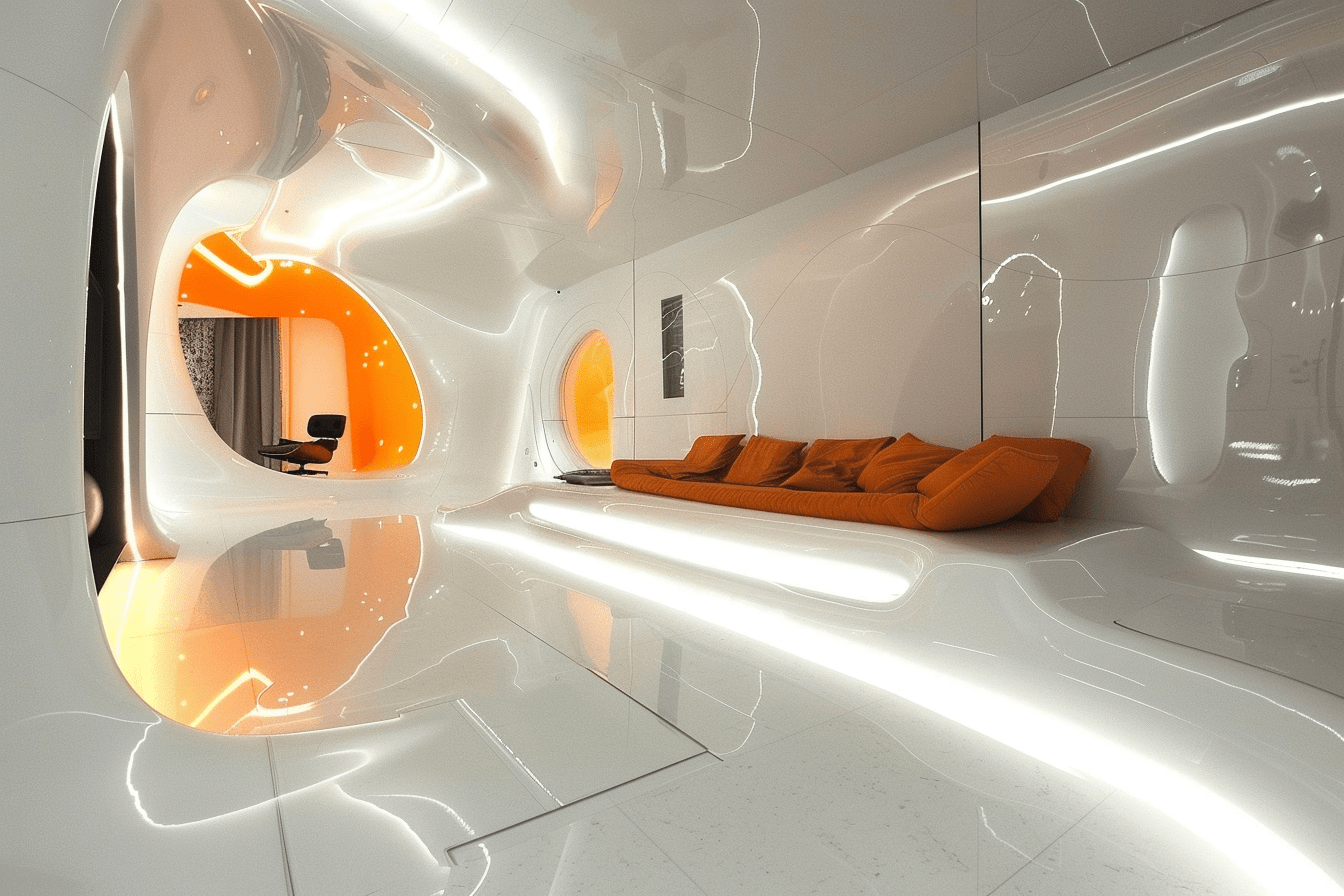Decluttering and the Transition to Remote Work: Creating a Productive Space at Home

Embracing a New Work Environment
The shift to remote work has transformed how many Americans approach their daily routines. Now, more than ever, creating a productive space at home is essential for success. As individuals continue to balance family, chores, and work responsibilities, the challenge of maintaining focus in a home environment can become daunting. Therefore, implementing strategies to curate an effective workspace is no longer a mere suggestion; it is a necessity for those aiming to thrive in this evolving landscape.
As home offices become the norm, the clutter around us can easily detract from our professional endeavors. A tidy workspace can significantly impact productivity. Consider these compelling benefits of decluttering:
- Improved Focus: A clean environment helps minimize distractions. Studies indicate that clutter can overload our ability to concentrate; a disorganized desk may lead to scattered thoughts and inefficiency. For example, a survey by the Princeton University Neuroscience Institute found that individuals performed better on tasks when their environments were organized.
- Enhanced Creativity: An organized space can foster innovative thinking. Creative minds often thrive in environments that are free from chaos. Take inspiration from tech giants like Google, whose beautifully designed workspaces not only encourage collaboration but also feature distinct zones for relaxation, ultimately leading to high levels of creativity.
- Less Stress: Reducing excess clutter contributes to a calming atmosphere. When your surroundings are tidy, you might find that your mental clarity improves, leading to less anxiety and greater job satisfaction. Research has shown that a clutter-free space can help lower cortisol levels, the hormone linked to stress.
Transitioning from a traditional office to a remote setup doesn’t require a drastic overhaul. Instead, small, intentional changes can lead to a more effective workspace. Here are some practical strategies to create an ideal work environment:
- Designate a Workspace: Choose a specific area in your home dedicated to work. This could be a spare room, a nook in your living room, or even a corner of your bedroom. Defining this space helps create a mental boundary between work and home life.
- Organize Essentials: Keep only what you need on hand to minimize distraction. Essential tools like notebooks, pens, or your laptop should be within reach, but extraneous items like magazines or personal knick-knacks should be stored away to prevent clutter.
- Personalize Thoughtfully: Add elements that inspire you without cluttering the space. Consider art pieces that resonate with you, plants that can purify your air, or motivational quotes that keep you motivated throughout the day. Personal touches can help instill a sense of ownership and comfort in your workspace.
By taking the time to declutter and optimize your work area, you can enhance your productivity while embracing the flexibility of remote work. This not only makes daily tasks more manageable but also allows you to carve out pockets of time for creative pursuits and personal development. Ultimately, this guide will explore effective methods to transform your home into a space that supports focus and creativity, making the most of the benefits that remote work offers.
DIVE DEEPER: Click here to discover more
Strategies for an Effective Home Workspace
With the surge in remote work, establishing a dedicated workspace has become vital for maintaining productivity. A well-organized environment not only keeps distractions at bay, but also allows for a better balance between personal and professional life. Adopting a few strategic approaches can significantly enhance your home office’s efficiency, allowing you to optimize the time you spend working from home.
A key component of this optimization process is decluttering. Reducing your physical and digital clutter can streamline how you work. Studies show that an organized environment can lead to better productivity outcomes, with some research indicating that an individual may spend up to 30% of their workday searching for items they cannot find. This startling statistic underlines the importance of a streamlined, orderly workspace.
The Art of Minimalism
Minimalism—embracing simplicity and functionality—can be a guiding principle in redesigning your remote workspace. Here are some effective strategies to implement:
- Limit Surface Items: Avoid overcrowding your desk with supplies and decorations. Keep only the items you frequently use within arm’s reach, such as your laptop, planner, and essential stationery. This practice minimizes visual distractions and consolidates your focus to quality work.
- Establish a Digital Declutter Routine: Take some time to organize your digital files. Create clear folders, archive old projects, and unsubscribe from unnecessary emails. A tidy digital space fosters a smooth workflow and reduces the anxiety that can arise from navigating an overwhelming inbox.
- Incorporate Smart Storage Solutions: Utilize shelves, file organizers, and desk drawers to keep your workspace clear. With easy access to storage solutions, you can quickly put away items that are not in use, reinforcing a clean and inviting atmosphere.
In addition to physical decluttering, consider the psychological effects of your workspace. Research shows that a thoughtfully designed workspace can promote satisfaction and productivity. For instance, an ergonomic chair and desk setup can reduce discomfort, while well-placed lighting can enhance your overall well-being throughout the workday. Plants have also been shown to improve air quality and reduce stress levels—perfect for your home office sanctuary.
The Role of Routine in Maintaining Order
To maintain a clutter-free environment, establishing a daily decluttering routine is beneficial. Consider setting aside a few minutes at the end of each workday to tidy up your workspace. This small habit can prevent clutter from building up and creates a clean slate for your next work session. It also reinforces a psychological boundary, signaling the close of your workday and allowing for a transition into personal time.
As you redefine what productivity looks like in a remote setting, remember that a clutter-free environment serves as a catalyst for concentrated work. Integrating these strategies into your daily routine can pave the way for a successful and focused remote work experience. By consciously decluttering your physical and digital spaces, you’re not just creating a workspace; you’re cultivating a mindset that champions efficiency and creativity.
Benefits of Decluttering Your Home Office
As more professionals transition to remote work, creating an efficient and productive workspace at home has become essential. The process of decluttering is not just about tidying up; it significantly impacts your productivity, mental clarity, and focus. Below, we explore vital aspects of how decluttering can enhance your home working environment.
| Advantages | Impact on Productivity |
|---|---|
| Enhanced Focus | A decluttered workspace minimizes distractions, allowing for deeper focus on tasks at hand. |
| Improved Mental Clarity | Organized environments foster better cognitive function, helping you make decisions more effectively. |
| Stress Reduction | Decluttering reduces the mental load, alleviating stress that contributes to burnout. |
| Increased Efficiency | A tidy workspace allows for quick access to essential tools, increasing efficiency and productivity. |
Transitioning to a remote work setup doesn’t just require a change of scenery, but also a rethinking of how your workspace is organized. By embracing a decluttered approach, you can facilitate a productive environment that enhances your daily operations and promotes a positive work-life balance.
DISCOVER MORE: Click here to enhance your productivity and wellbeing.
Harnessing Technology for a Streamlined Workflow
In a rapidly digitalizing world, technology can be a double-edged sword—it can either enhance productivity or exacerbate clutter. As you transition to a remote workspace, adopting the right digital tools and software is crucial in maintaining that clutter-free environment. Here are some approaches to consider:
Digital Organization Tools
Utilizing proper organizational software can significantly lessen digital clutter. Applications like Trello and Asana provide platforms for task management, helping you visually prioritize your workload without the chaos of sticky notes or overflowing to-do lists. Features such as reminders and deadlines foster an organized structure, leading to improved focus.
Moreover, cloud storage solutions such as Google Drive and Dropbox facilitate easy categorization of files, allowing easy access and reducing the chance of creating a disorganized digital landfill. Take advantage of features like shared folders where team members can collaborate without the burden of email chains that can spiral into clutter.
The Importance of Task Prioritization
Another integral part of ensuring a productive remote workspace is learning the art of task prioritization. The Eisenhower Matrix, which helps determine the urgency and importance of tasks, is a method worth exploring. By categorizing tasks into four quadrants, you can focus on what truly matters, thus limiting the clutter of unnecessary tasks that clutter both your physical and mental space.
Additionally, using tools like Pomodoro Technique timers allows for concentrated work sessions interspersed with scheduled breaks. This technique not only maintains productivity but also prevents burnout, thereby making your workspace a haven of efficiency.
Creating Boundaries with Technology
While technology facilitates improved organization, it can also lead to information overload. Tim Ferriss, author of “The 4-Hour Workweek,” emphasizes the importance of setting boundaries with technology. Utilize tools like Freedom or Cold Turkey to block distracting websites and apps during your designated work hours. Alternatively, consider turning off non-essential notifications on your phone or computer to minimize interruptions and reduce the temptation of digital distractions.
Investing in quality technology—such as a high-speed internet connection, an ergonomic keyboard, and noise-canceling headphones—can pay dividends. These improvements to your workspace not only bolster productivity but also enhance comfort, making it easier to maintain focus throughout the day.
Establishing a Sensory-Friendly Environment
It’s essential to recognize that the sensory elements of your workspace play a significant role in fostering a productive atmosphere. Ambient noise, lighting, and even scents can influence your mood and concentration levels. Consider implementing tools like aromatherapy diffusers with essential oils or soft ambient lighting to create a calming environment.
Incorporating sound systems to play background music or white noise can effectively drown out distractions from the outside world while still allowing you to maintain focus. Research by the University of Illinois has shown that moderate background noise can enhance creativity, which can be beneficial in a remote work setting. Experiment with different sensory elements to discover what catalyzes your productivity.
In the journey of decluttering your remote workspace, embracing technological solutions alongside mindful organization techniques can position you for success. Remember, your home office should not just be a place to work, but a space that encourages creativity, efficiency, and equilibrium in your professional life.
DIVE DEEPER: Click here to discover how simplicity can elevate your space
Conclusion: Embracing a Harmonious Workspace
As we navigate the evolving landscape of remote work, the importance of decluttering cannot be overstated. A well-organized workspace not only enhances productivity but also fosters a sense of calm and focus amidst the myriad of distractions that come with working from home. By implementing effective organizational strategies, utilizing digital tools, and creating a sensory-friendly environment, you can cultivate a space that is both functional and inspiring.
Moreover, understanding the balance between embracing technology and setting boundaries can significantly enhance your workflow. The seamless integration of organizational apps and prioritization techniques, such as the Eisenhower Matrix, streamlines task management and minimizes the overwhelm often associated with remote work. By intentionally designing your workspace, you not only enhance your efficiency but also promote your overall well-being.
Ultimately, transition to remote work is an opportunity to redefine how we perceive our professional environments. Consider your home office as more than just a workplace; view it as an extension of your personal ethos—a space that reflects your values, creativity, and commitment to productivity. As you embark on this transformative journey, challenge yourself to innovate continuously, adjust your surroundings, and embrace the power of simplification. Your productive haven awaits, and the potential to achieve new heights in your work lies in your hands.

